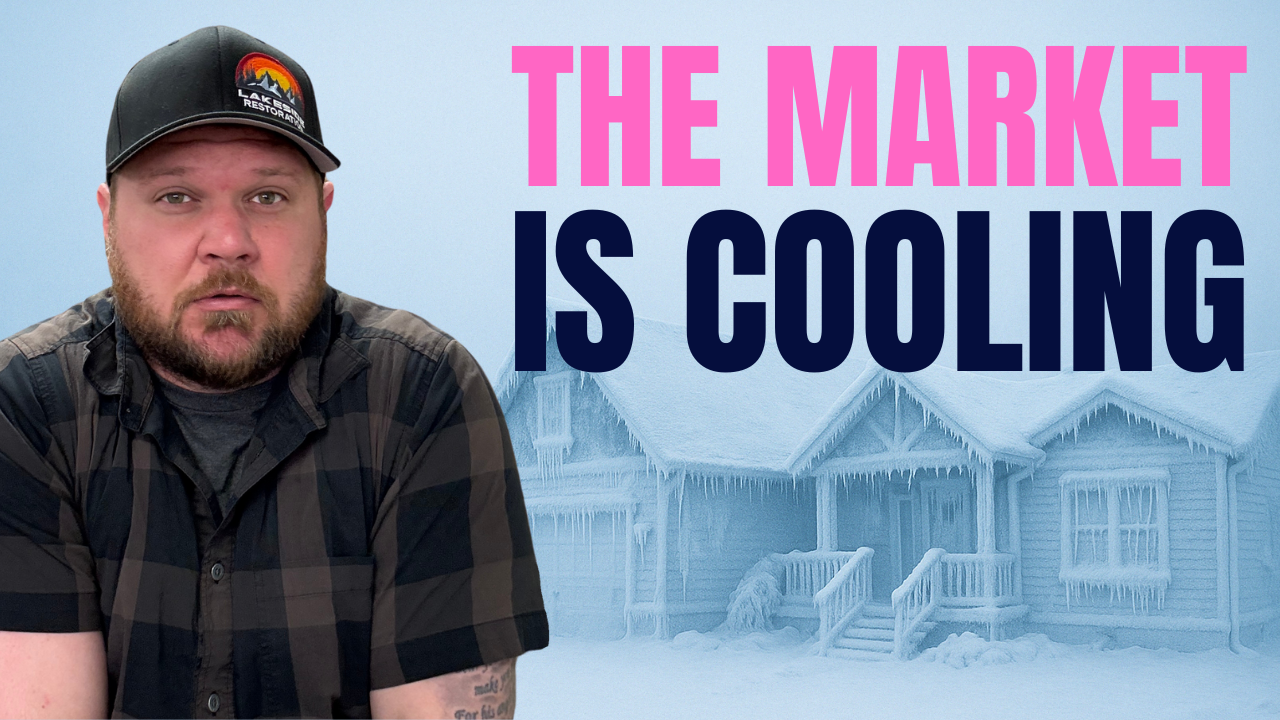April 2025 Market Update
If you’ve been watching the real estate headlines—or maybe even Zillow—you might be wondering: Is Sandpoint’s housing market finally cooling down?
The short answer? Yes… but not in the way you might think.
Let’s take a look at what’s really happening right now in Bonner County, based on real-time data, buyer behavior, mortgage rates, and national economic indicators. Whether you’re buying, selling, or just watching the market—you’ll want to read this all the way through.
What the Data Is Telling Us
Over the last 12 months, the average list price in Bonner County sat just above $1.13 million, while the average sold price was about $765,000.
That’s a gap of around $365,000, which might sound shocking—until you realize what’s causing it.
Several high-end homes in the $4M–$6M range didn’t sell, but they still impact the list price average. Meanwhile, more homes in the $500K–$800K range did sell, and that pulled the average sold price down. This is why I rely on a rolling 12-month average—it filters out those outliers and gives a more accurate view of what’s really happening.
👉 Bottom line: Pricing is stabilizing, not crashing.
Seasonal Slowdown? Yes. But Buyer Activity Surprised Us
December saw a ton of homes come off the market—but that’s normal around here. With snow on the ground and roofs covered, it’s hard to inspect or show property in the winter.
But here’s what was different this winter: Buyer activity was up.
I had multiple showings across my listings—and many of those same buyers were showing up at other local homes too. They were actively shopping… just not pulling the trigger.
Why? Uncertainty. Interest rates. Timing.
Buyer Window Is Starting to Close
If you’re buying in the $400,000 to $800,000 range, the opportunity is now. Here’s why:
-
Homes in this range are selling about 20–30 days faster than the overall market.
-
They’re selling for about 2% closer to list price.
-
Sellers in this bracket are still offering concessions, flexible terms, and price reductions.
But here’s the catch—mortgage rates recently dipped into the mid-6% range, and we instantly saw more activity: more showings, more mortgage applications, and more offers.
📈 When rates drop, buyer competition heats up.
That flexibility you see today? It’ll disappear if the market shifts back in favor of sellers.
The Role of Mortgage Rates (And the 10-Year Treasury)
Most buyers don’t realize this, but mortgage rates follow the 10-year U.S. Treasury yield. When the yield goes up, so do mortgage rates.
As of April 2025, the 10-year Treasury sits around 4.34%. For perspective:
-
In 2022, it averaged 2.94%
-
In 2023: 3.96%
-
In 2024: 4.15%
So we’re still elevated—but we’ve come down from peak volatility.
Lower yields = cheaper borrowing. And when that happens, demand rebounds.
What About Inflation and Shelter CPI?
March brought the first negative CPI print in over a year—finally showing signs that inflation might be cooling.
Shelter CPI (which heavily influences interest rates) is still high, but it lags the market by 12–18 months because it’s based mostly on rent.
Now that real-time rents have stabilized or even dropped, CPI is just starting to reflect that. That’s why rates dipped recently—and why they could continue to fall later this year.
More affordability = more buyers back in the game.
Why Inventory Is Still Tight
Even though prices are high, inventory remains low.
Why?
Because most homeowners are locked into 2–3% mortgage rates, and even with tons of equity, they’re not moving unless they have to.
The average U.S. homeowner has nearly 50% equity, and about 40% own their homes outright. That’s a lot of staying power—and not a lot of inventory turnover.
Builders aren’t helping much either. High costs, labor shortages, and regulatory barriers are keeping new construction low.
This Is Not 2008
Let’s be clear: This is not a housing crash.
-
In 2008, the average loan-to-value ratio was 85%.
→ Today? Under 50%. -
In 2010, 23% of homes were underwater.
→ Today? Just 1.8%.
This isn’t a bubble. This is an affordability correction.
Fewer buyers doesn’t mean panic. It means they’re waiting for the right time—and the moment rates shift lower, they’ll be back.


